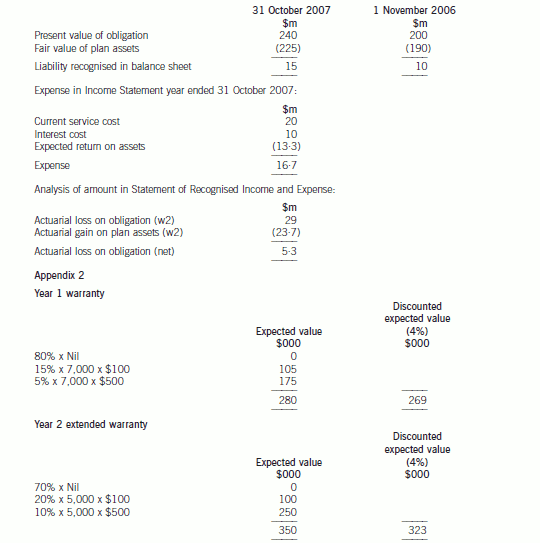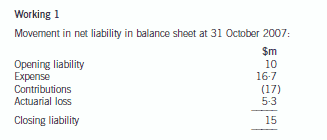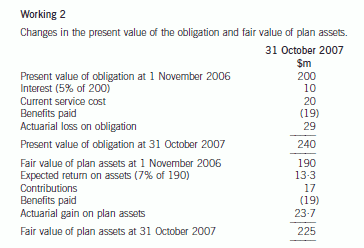黑龙江考生注意:最新ACCA考试新增题型和题型分析
发布时间:2020-01-10
随着国家相关政策的发布和改革,备受大家关注的ACCA考试也在近些年悄悄地发生着变化,尤其是考试题型的部分,这一部分51题库考试学习网建议各位备考ACCA的同学们提前了解一下,以此来有目的性地复习各科考试科目。那到底发生了怎么样的变化呢?且随51题库考试学习网一起了解了解:
首先就是在ACCA F阶段的一些新题型:
|
ACCA考试科目 |
考试题型 |
|
F5 F7 F9 |
15 x 2 mark 客观题 3 x 10 mark 案例客观题 2 x 20 mark 主观题 |
|
F6 (UK) |
15 x 2 mark 客观题 3 x 10 mark 案例客观题 1 x 10 mark 主观题 2 x 15 mark 主观题 |
|
F8 |
3 x 10 mark 案例客观题
1 x 30 mark 主观题 |
ACCA 机考题型介绍(主要是F阶段)
(一)客观题(Objective test questions/ OT questions)客观题是指这些单一的,题干较短的,并且自动判分的题目。每道客观题的分值为2分,考生必须回答的完全正确才可以得分,即使回答正确一部分,也不能得到分数。所以,考生要认真仔细的看问题,不要马虎大意
(二)案例客观题 (OT case questions)
案例客观题是ACCA引入的新题型,每道案例客观题都是由一组与一个案例相关的客观题组成的,因此要求考生从多个角度来思考一个案例。这种题型能很好的反映出考生将如何在实践中完成这些任务。
(三) 主观题 (Constructed response questions/ CR qustions)考生将使用电子表格程序和文字处理程序去完成主观题的回答。就像笔试中的主观题一样,答案最终将由专家判分。
以上就是ACCA考试F阶段的关于考试题型的介绍,如果你已经通过了F阶段的所有考试科目,那么下面对P阶段的题型分析建议你可以好好浏览~和F阶段相比,P阶段需要你付出的更多,需要更加加倍的努力才可以通过,因此备考的各位千万不要松懈~
ACCA P阶段题型分析
P1考试题型构成
Section A: 1 compulsory case study * 50 Marks;
Section B: Choice of 2 from 3 questions * (25 marks each)
Section A will be a compulsory case study question with typically four or five sub-requirements relating to the same scenario information. The question will usually assess and link a range of subject areas acrossthe syllabus. It will require students to demonstrate high-level capabilities to understand the complexities of the case and evaluate, relate and apply the information in the case study to the requirements.
Section B questions are more likely to assess a range of discrete subject areas from the main syllabus section headings. They may require evaluation and synthesis of information contained within short scenarios and application of this information to the question requirements.
ACCA P2考试题型构成
Section A will consist of one scenario based question worth 50 marks. It will deal with the preparation of consolidated financial statements including group statements of cash flows and with issues in financial reporting. A written part normally covering a particular accounting treatment and ethical and social issues in financial reporting.
Students will be required to answer two out of three questions in Section B, which will normally comprise two questions which will be scenario or case-study based and one essay question which may have some computational element. Section B could deal with any aspects of the syllabus. New accounting standards will feature prominently in this section on initial introduction.
ACCA P3考试题型构成
Section A: 1 compulsory case study * 50 Marks;
Section B: Choice of 2 from 3 questions * (25 marks each)
Section A will be a compulsory case study question with several requirements relating to the same scenario information. The question will usually assess and link several subject areas from across the syllabus, and will require you to demonstrate high-level capabilities to evaluate, relate and apply the information in the scenario to the question requirements. There will always be some financial or numerical data in the scenario and marks will be available for numerical analysis which supports your written argument.
Section B questions are more likely to examine discrete subject areas. They will be based on short scenarios, and you will be expected to apply information from the scenarios to the question requirements.
ACCA P4考试题型构成
Section A contains ONE compulsory question of 50 marks.
Section B is a choice of TWO from three questions, each carrying 25 marks. There are 3 hours for the exam, plus 15 minutes of reading time.
ACCA P5考试题型构成
Part A One compulsory question 50 marks.
Part B Two from three questions each of 25 marks
ACCA P7考试题型构成
The first 2 questions in the exam are compulsory and will be worth anywhere between 50% and 70%. The remaining 30% – 50% are divided between 2 from 3 other questions
辛勤奋战在学海,汗水扬起成功帆。无烟战场今日起,气定神闲退万军。心态良好细审题,才思敏捷答考卷。自信人生二百年,收获人生好前程。
最后51题库考试学习网提前预祝小伙伴们成功上岸!!加油!
下面小编为大家准备了 ACCA考试 的相关考题,供大家学习参考。
(b) (i) Discusses the principles involved in accounting for claims made under the above warranty provision.
(6 marks)
(ii) Shows the accounting treatment for the above warranty provision under IAS37 ‘Provisions, Contingent
Liabilities and Contingent Assets’ for the year ended 31 October 2007. (3 marks)
Appropriateness of the format and presentation of the report and communication of advice. (2 marks)
(b) Provisions – IAS37
An entity must recognise a provision under IAS37 if, and only if:
(a) a present obligation (legal or constructive) has arisen as a result of a past event (the obligating event)
(b) it is probable (‘more likely than not’), that an outflow of resources embodying economic benefits will be required to settle
the obligation
(c) the amount can be estimated reliably
An obligating event is an event that creates a legal or constructive obligation and, therefore, results in an enterprise having
no realistic alternative but to settle the obligation. A constructive obligation arises if past practice creates a valid expectation
on the part of a third party. If it is more likely than not that no present obligation exists, the enterprise should disclose a
contingent liability, unless the possibility of an outflow of resources is remote.
The amount recognised as a provision should be the best estimate of the expenditure required to settle the present obligation
at the balance sheet date, that is, the amount that an enterprise would rationally pay to settle the obligation at the balance
sheet date or to transfer it to a third party. This means provisions for large populations of events such as warranties, are
measured at a probability weighted expected value. In reaching its best estimate, the entity should take into account the risks
and uncertainties that surround the underlying events.
Expected cash outflows should be discounted to their present values, where the effect of the time value of money is material
using a risk adjusted rate (it should not reflect risks for which future cash flows have been adjusted). If some or all of the
expenditure required to settle a provision is expected to be reimbursed by another party, the reimbursement should be
recognised as a separate asset when, and only when, it is virtually certain that reimbursement will be received if the entity
settles the obligation. The amount recognised should not exceed the amount of the provision. In measuring a provision future
events should be considered. The provision for the warranty claim will be determined by using the expected value method.
The past event which causes the obligation is the initial sale of the product with the warranty given at that time. It would be
appropriate for the company to make a provision for the Year 1 warranty of $280,000 and Year 2 warranty of $350,000,
which represents the best estimate of the obligation (see Appendix 2). Only if the insurance company have validated the
counter claim will Macaljoy be able to recognise the asset and income. Recovery has to be virtually certain. If it is virtually
certain, then Macaljoy may be able to recognise the asset. Generally contingent assets are never recognised, but disclosed
where an inflow of economic benefits is probable.
The company could discount the provision if it was considered that the time value of money was material. The majority of
provisions will reverse in the short term (within two years) and, therefore, the effects of discounting are likely to be immaterial.
In this case, using the risk adjusted rate (IAS37), the provision would be reduced to $269,000 in Year 1 and $323,000 in
Year 2. The company will have to determine whether this is material.
Appendix 1
The accounting for the defined benefit plan is as follows:



(b) Describe with suitable calculations how the goodwill arising on the acquisition of Briars will be dealt with in
the group financial statements and how the loan to Briars should be treated in the financial statements of
Briars for the year ended 31 May 2006. (9 marks)
(b) IAS21 ‘The Effects of Changes in Foreign Exchange Rates’ requires goodwill arising on the acquisition of a foreign operation
and fair value adjustments to acquired assets and liabilities to be treated as belonging to the foreign operation. They should
be expressed in the functional currency of the foreign operation and translated at the closing rate at each balance sheet date.
Effectively goodwill is treated as a foreign currency asset which is retranslated at the closing rate. In this case the goodwillarising on the acquisition of Briars would be treated as follows:

At 31 May 2006, the goodwill will be retranslated at 2·5 euros to the dollar to give a figure of $4·4 million. Therefore this
will be the figure for goodwill in the balance sheet and an exchange loss of $1·4 million recorded in equity (translation
reserve). The impairment of goodwill will be expensed in profit or loss to the value of $1·2 million. (The closing rate has been
used to translate the impairment; however, there may be an argument for using the average rate.)
The loan to Briars will effectively be classed as a financial liability measured at amortised cost. It is the default category for
financial liabilities that do not meet the definition of financial liabilities at fair value through profit or loss. For most entities,
most financial liabilities will fall into this category. When a financial liability is recognised initially in the balance sheet, the
liability is measured at fair value. Fair value is the amount for which a liability can be settled, between knowledgeable, willing
parties in an arm’s length transaction. In other words, fair value is an actual or estimated transaction price on the reporting
date for a transaction taking place between unrelated parties that have adequate information about the asset or liability being
measured.
Since fair value is a market transaction price, on initial recognition fair value generally is assumed to equal the amount of
consideration paid or received for the financial asset or financial liability. Accordingly, IAS39 specifies that the best evidence
of the fair value of a financial instrument at initial recognition generally is the transaction price. However for longer-term
receivables or payables that do not pay interest or pay a below-market interest, IAS39 does require measurement initially at
the present value of the cash flows to be received or paid.
Thus in Briars financial statements the following entries will be made:

(c) Identify and evaluate other strategic options ONA could consider to address the airline’s current financial and
operational weaknesses.
Note: requirement (c) includes 2 professional marks (10 marks)
(c) Within the strategy clock, ONA might consider both differentiation and focus. A differentiation strategy seeks to provide
products or services that offer different benefits from those offered by competitors. These benefits are valued by customers
and so can lead to increased market share and, in the context of ONA, higher seat utilisation. Differentiation is particularly
attractive when it provides the opportunity of providing a price premium. In other words, margins are enhanced through
differentiation. Air travellers may be willing to pay more to travel with an airline that offers seat allocation and free in-flight
food and drinks.
However, such a broad-based differentiation strategy may be inappropriate for ONA because of the need to service both
business and leisure travellers. Consequently, the potential strategy also has to be considered in the context of the two sectors
that the company perceives that it services. In the regional sector a focused differentiation strategy looks particularly attractive.
Here, the strategy focuses on a selected niche or market segment. The most obvious focus is on business travel and building
the company’s strengths in this sector. This focus on the business traveller might be achieved through:
– Ensuring that flight times are appropriate for the business working day. This is already a perceived strength of the
company. This needs to be built on.
– Providing more space in the aircraft by changing the seating configuration – and the balance between business and
standard class. ONA currently has a low seat occupancy rate and a reduction in seat capacity could be borne.
– Fewer passengers in the aircraft may also lead to improved throughput times. Loading and unloading aircraft is quicker,
minimising the delays encountered by the traveller.
– Providing supporting business services – lounges with fax and internet facilities.
– Speeding the process of booking and embarkation (through electronic check-in), so making the process of booking and
embarkation easier and faster.
– Providing loyalty schemes that are aimed at the business traveller.
Although this focused differentiation is aimed at the business customer it is also likely that particular aspects of it will be
valued by certain leisure travellers. Given the strong regional brand (people from Oceania are likely to travel ONA) and the
nature of the leisure travel in this sector (families visiting relatives) it seems unlikely that there will be a significant fall off in
leisure travel in the regional sector.
In the international sector, the strategic customer is less clear. This sector is serving both the leisure and business market and
is also competing with strong ‘no frills’ competitors. The nature of customer and competition is different. A strategy of
differentiation could still be pursued, although perhaps general differentiation (without a price premium) may be more effective
with the aim of increasing seat occupancy rate. This sector would also benefit from most of the suggested improvements of
the regional sector – providing more space in aircraft, faster passenger throughput, electronic check-in etc. However, these
small changes will not address the relatively low flight frequency in this sector. This could be addressed through seeking
alliances with established airlines in the continental countries that it services. Simple code share agreements could double
ONA’s frequencies overnight. Obviously, ONA would be seeking a good cultural fit – the ‘no frills’ low-cost budget airlineswould not be candidates for code shares.
ONA’s perception of market segmentation, reflected in splitting regional from international travel and distinguishing leisure
from business appears to be a sensible understanding of the marketplace. However, it might also be useful for them to
consider on-line customers and commission customers (travel agents) as different segments. Perceiving travel agents as the
strategic customer would lead to a different strategic focus, one in which the amount and structure of commission played an
important part.
Finally, whichever strategy ONA adopts, it must continue to review its operational efficiency. An important strategic capability
in any organisation is to ensure that attention is paid to cost-efficiency. It can be argued that a continual reduction in costs
is necessary for any organisation in a competitive market. Management of costs is a threshold competence for survival. ONA
needs to address some of the weaknesses identified earlier in the question. Specific points, not covered elsewhere, include:
– Improved employee productivity to address the downward decline in efficiency ratios.
– Progressive standardisation of the fleet to produce economies of scale in maintenance and training. This should reduce
the cost base.
– Careful monitoring of expenditure, particularly on wages and salaries, to ensure that these do not exceed revenue
increases.
Candidates may address this question in a number of ways. In the model answer given above, the strategy clock is used –
as it uses the term ‘no frills’ in its definition and so it seems appropriate to look at other options within this structure. However,
answers that use other frameworks (such as Ansoff’s product/market matrix) are perfectly acceptable. Furthermore, answerswhich focus on the suitability, acceptability and feasibility of certain options are also acceptable.
声明:本文内容由互联网用户自发贡献自行上传,本网站不拥有所有权,未作人工编辑处理,也不承担相关法律责任。如果您发现有涉嫌版权的内容,欢迎发送邮件至:contact@51tk.com 进行举报,并提供相关证据,工作人员会在5个工作日内联系你,一经查实,本站将立刻删除涉嫌侵权内容。
- 2020-01-10
- 2020-01-10
- 2020-04-18
- 2020-04-09
- 2020-01-09
- 2020-04-23
- 2020-01-15
- 2019-12-27
- 2020-01-10
- 2019-07-20
- 2020-05-14
- 2020-04-22
- 2020-01-10
- 2020-03-18
- 2020-04-08
- 2020-01-13
- 2020-01-09
- 2020-04-16
- 2020-01-10
- 2020-01-10
- 2020-01-10
- 2020-01-09
- 2020-04-12
- 2020-01-09
- 2020-01-09
- 2020-03-25
- 2020-01-31
- 2020-01-10
- 2020-01-10
- 2019-07-20